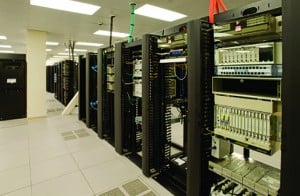Fire suppression systems are essential to the server room itself – without any human intervention, the system will automatically extinguish a fire, immediately protecting one of the most expensive and valuable rooms in the building for many businesses. Typical causes of server room fires include electrical failure in the IT equipment, overheated electronics, subfloor wiring malfunctions and fires spreading from other rooms in the building. Because of the sensitive and vulnerable nature of server rooms, choosing a suppression systems over a sprinkler system can be a vital decision as sprinkler systems cause expensive water damage and may put the business at risk with excessive downtime. The design standards for fire suppression systems in server rooms have strict guidelines in regards to the fire suppression agents. Fires can be suppressed into two different ways:
- Insert Gas Fire Suppression Systems: The intention of this method is to reduce oxygen level below 15% displacing the oxygen with Argon/Nitrogen. The design also takes into consideration the safety of server room personnel by keeping oxygen levels above 12% to protect anyone present.
- Synthetic Gas Suppression: Rather than reducing oxygen levels, this system uses a cooling mechanism to remove heat. Synthetic gas can be configured as heat and power to maximize the efficiency of systems such as providing residential homes energy or heat.
A typical server room will have additional fire suppression system equipment, including:
- Fire Suppression Control Panel
- Smoke Detection
- Audible Alarms
The fire suppression system includes early detection systems that use lasers, ionization or heat sensitivity to detect very low concentrations of smoke, which can prevent a fire from even starting.
Consult the NFPA regulations for more information regarding fire incidents in electronic equipment areas, as well as best practices to avoid threats of fire.
Contact Koorsen Fire & Security Associate for a free hazard analysis and consultation for your server room.



